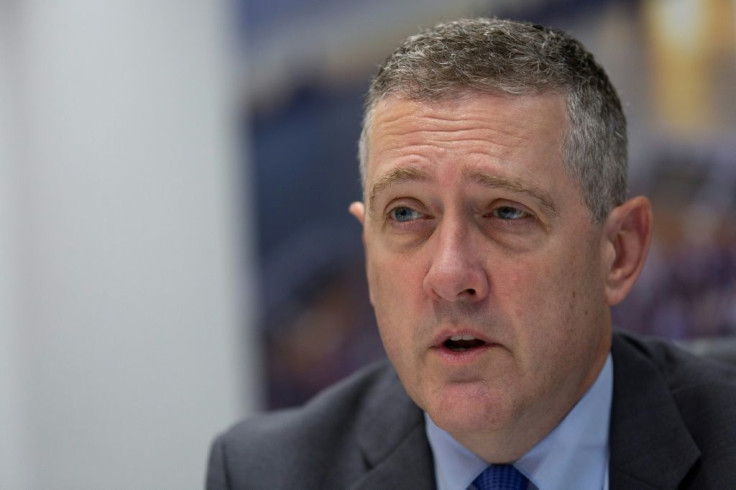US Fed Divided On Policy Amid Trade War Uncertainty

US central bankers appear increasingly divided on the best course to preserve economic expansion, without fueling dangerous speculative behavior on financial markets.
Meanwhile, amid concerns authorities were letting short-term interest rates slip out of control, the New York Federal Reserve Bank announced more aggressive steps to pump billions into the economy's financial plumping over the next three weeks to alleviate a cash crunch.
Federal Reserve Vice Chair Richard Clarida said Friday "the center of gravity" of the central bank favored the second cut in the benchmark lending rate this year, and the Fed will act on "a case-by-case basis" at the final two policy meetings of 2019.
Still, three of the 10 voting members of the Fed's policy-setting Federal Open Market Committee dissented from Wednesday's decision to cut the benchmark borrowing rate by a quarter-point to a range of 1.75-2.0 percent.
James Bullard, president of the St Louis Federal Reserve Bank, said Friday he wanted to see a bigger rate cut to protect against rising risks of a downturn in the American economy amid trade uncertainty.
A half-point cut "would provide insurance against further declines in expected inflation and a slowing economy subject to elevated downside risks."
Where in the world is inflation?
Bullard has long argued that inflation has been stuck too far below the Fed's two percent target, so the US central bank can afford to "cut the policy rate aggressively now" to boost the economy.
As the Fed's preferred inflation measure rose last year, the FOMC raised interest rates four times.
But price pressures have been softening since then and inflation remains well below the target. And amid rising uncertainties the central bank in late July cut the policy lending rate for the first time in more than a decade.
On the other side of the argument, Eric Rosengren of the Boston Fed and Esther George of Kansas City, both dissented, preferring to keep the key lending rate unchanged.
Rosengren said Friday that adding more stimulus to an economy that is already growing "risks further inflating the prices of risky assets and encouraging households and firms to take on too much leverage."
In a speech later Friday, he put the spotlight on a particular area of risk: office sharing companies.
Although he did not mention WeWork, that company is a dominant player in commercial real estate in major cities like New York and London.
He worried that the contracts used in the office sharing model "may allow the co-working company to potentially walk away from unprofitable lease arrangements in an economic downturn."
And that along with high debt levels "can be an amplifier that makes recessions more severe."
Cash shortage
Meanwhile, investors and analysts have become concerned about a cash shortage in the economy's financial plumbing. While it can be explained by technical reasons, the crunch has raised doubts as to whether something has gone wrong in the Fed's management.
The New York Fed -- which handles the levers that control the flow of money in the system -- has for the past four days had to pump billions into money markets after bank demand for cash pushed interest rates above the Fed's target.
After four days of "repo" operations, the New York Fed announced Friday it will provide up to $75 billion a day for the next three weeks, to ensure banks have the cash on hand they need, and kept the door open to doing more as needed.
Tim Duy, economics professor at the University of Oregon, said the real question is why the officials realized too late that banks were struggling to replenish their reserves.
He speculated that the departure of two long-time officials at the head of the key department may have been a factor.
"Part of the reason for this confusion is that the New York Fed wasn't on top of this on the morning of day one," Duy said in a blog post. "The delay made it look like this was some kind of emergency rather than standard operating procedures."
Banks borrow regularly in markets for very short periods, usually overnight, to make sure their daily cash reserves do not fall below the required level. But interest rates increase with demand.
© Copyright AFP 2024. All rights reserved.




















